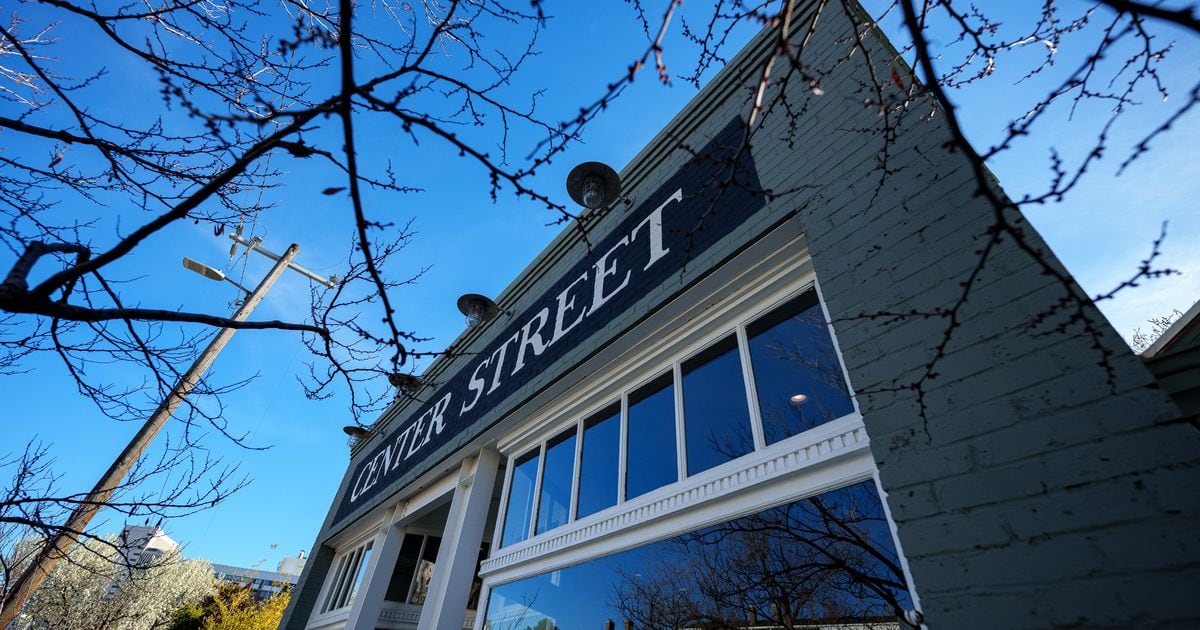A lot of restaurants throw around the labels “local” and “sustainable” these days. And without talking with the owner about their practices, there’s usually no way to tell from the outside whether a restaurant is sustainable or not.
“Too often,” said Adam Cold, the chef and owner of the Salt Lake City restaurant Roux, the label of “sustainable” is “used as a marketing strategy and not a way of life.”
If you want to get to the bottom of whether a restaurant is actually sustainable, there are several areas to look at — including what they do with their food waste, how they conserve energy, where they source their ingredients and how they treat their employees.
No restaurant will be able to be 100% sustainable, but these are five restaurants in Utah that are raising the bar when it comes to sustainability.
Cold said that at Roux, “I like to be realistic, and do what I can to contribute, but not be dishonest with the customer and say stuff like, ‘Everything’s local and everything’s sustainable,’ because that’s a very, very hard goal marker to achieve. But one worth fighting for.”
Pago
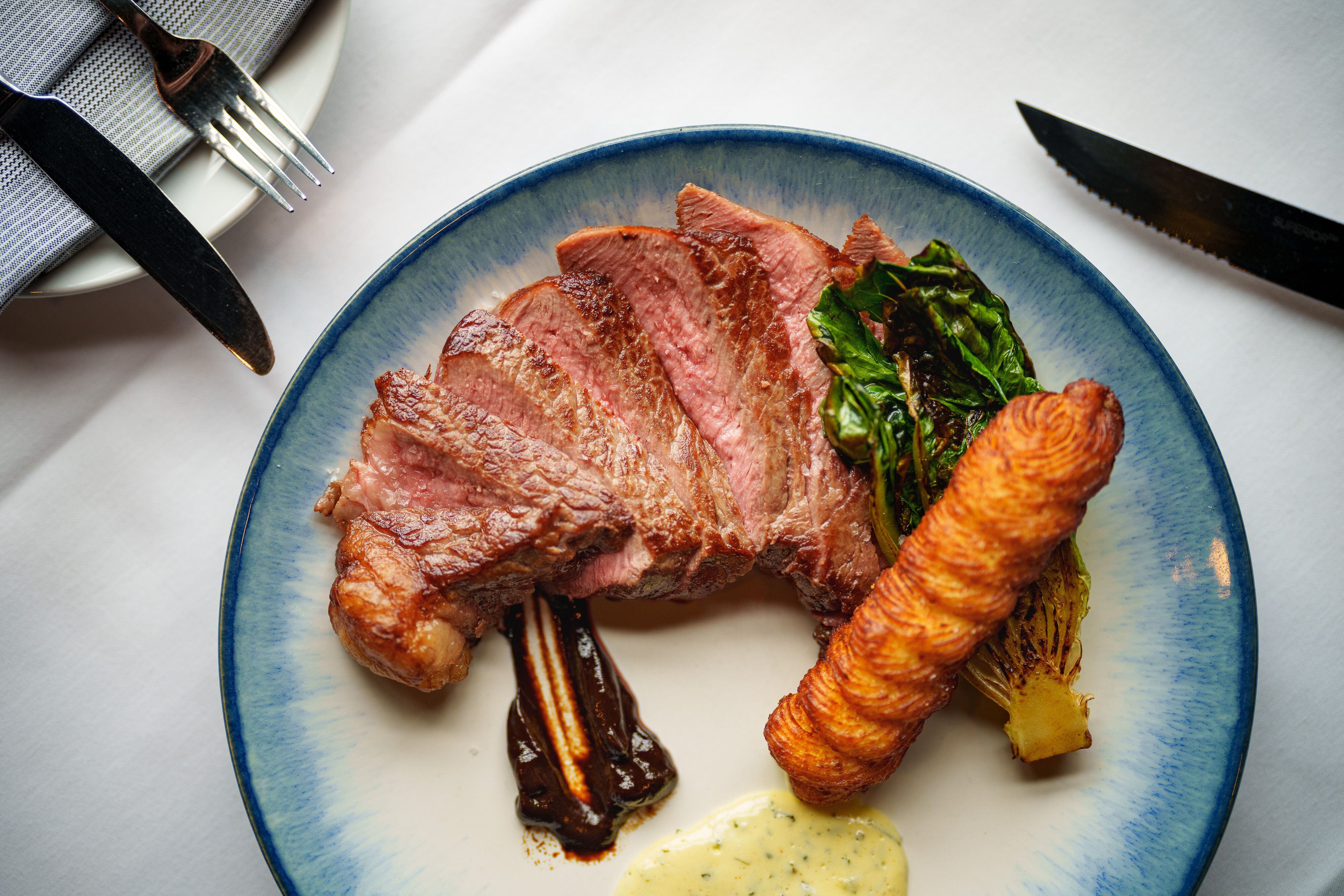
You won’t find tomatoes at Pago in December. Or April. That’s because the restaurant — at 878 S. 900 East in Salt Lake City’s 9th and 9th neighborhood — serves late-summer vegetables like tomatoes only when they’re in peak season, and at peak flavor, said Scott Evans, founder and president of Pago Restaurant Group.
Pago has a “true seasonal menu,” Evans said, meaning it changes every three to four months, depending on what’s growing and ripening at local farms at that time.
This modern American restaurant supports multiple local farms and producers, including Frog Bench Farms, Mico’s Micro Farm, Intermountain Gourmet, Keep It Real Vegetables, Wonderlands Mushrooms, Niman Ranch, Levity Baking Co. and Parker Farms Produce.
And everything from the wine list to the reclaimed materials used to build the restaurant itself, “we meticulously look through it and make sure that it fits our beliefs and goal of low impact on the environment,” Evans said.
As for meat, Pago keeps its menu vegetable-forward to begin with. When it does serve beef, that meat is responsibly raised, grass-fed and ethically sourced from Utah, Idaho and Wyoming, Evans said.
Pago also sources seafood using guidelines from the Monterey Bay Aquarium Seafood Watch. “People will still consume meat,” Evans said. “So it’s our intention to make it the best sourcing that we can find.”
Finca, one of Evans’ other restaurants, also uses the same sustainably focused sourcing practices, and its tapas selection changes seasonally.
Roux

If you visit Roux — at 515 E. 300 South in Salt Lake City — and order the rainbow trout, you can rest assured that the trout is as fresh as possible. Adam Cold, Roux’s chef and owner, sources his trout from Spring Lake Trout Farm in Utah County, and the live fish make the journey from Payson to Salt Lake City in an oxygenated tank. When the trout arrive at Roux, they’re killed using the Japanese technique of ikejime — which ensures the fish don’t suffer or suffocate — and then filleted in-house.
At Roux, which opened in February, Cold has been working to establish sustainable sourcing practices. He maintains relationships with local producers and growers, such as the trout farm, Red Acre Farm, Villa Ceramics (which makes the restaurant’s plates), Amano Artisan Chocolate, Frog Bench Farms, Sunnyside Up Pastures and Lund Land & Livestock.
“I like to know the people I’m actually doing business with,” Cold said.
When it comes to protein, Roux sometimes has a sustainably caught ocean-dwelling fish, but most of the time trout is served instead “because we don’t live anywhere near an ocean,” Cold said.
Beef is “definitely the worst for the environment out of all proteins,” he said, so he advises diners to “go extra” when choosing beef. “Get something local, get something high quality, and don’t just get the cheapest thing, because that’s the thing contributing to the problem,” he said.
Knowing how animals are raised and seeing the practices that farmers use goes further for Cold than just being environmentally responsible. It also “has to do with just personal standards for what I believe is great food,” he said.
Sego Restaurant
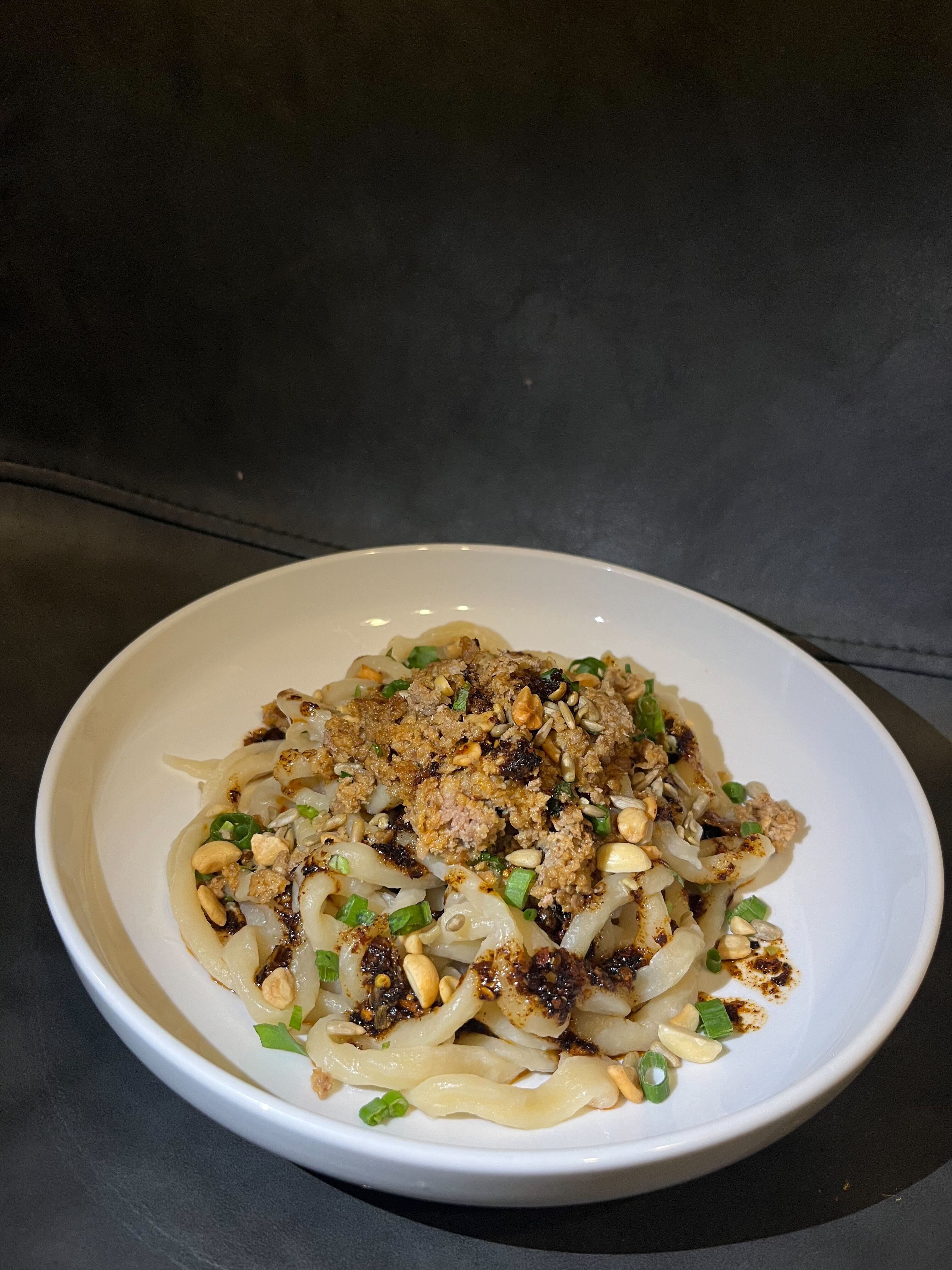
Chef and restaurateur Shon Foster said practicing sustainability “starts with one thing, and you try and add more.”
At his restaurant, Sego — at 190 N. 300 West in Kanab, inside the Canyons Boutique Hotel — sustainability began with the eatery’s energy consumption. Foster and his team put in a full induction kitchen, complete with an electric oven and an induction wok. He said it was a “little bit of an experiment,” because when Sego opened in 2015, induction technology “really hadn’t made its way onto the scene for commercial kitchens.”
The restaurant also replaced a lot of the hotel’s landscaping and turned it into garden. Foster said the space produces chives, rosemary, thyme, sage, strawberries, tomatoes, basil, horseradish, garlic and more.
In sourcing ingredients, Foster said Sego seeks to lower its carbon footprint by supporting several local producers and growers, including Red Acre Farm, Bishop Farms, Snuck Farm, 3 Springs Land & Livestock, The Forbes Family Farm, Milk Honey Yogurt, Deep Creek Coffee, Nature Attunement Farms, Mineral Springs Beef and Shamrock Farms, a dairy out of Arizona.
Sego does serve fish from the ocean, but Foster said he works with boats that are in the 200-mile stretch between Santa Barbara, California, and San Diego, and the way they ship and package their fish is “as low impact on the environment as possible.”
Restaurants are innately “highly problematic” when it comes to food waste, Foster said. At Sego, most food scraps are either used to make the day’s “family meal” for the staff, composted or fed to animals, when possible.
Foster said he’s motivated by the word “stewardship.”
“If you’re going to come to one of our restaurants, we should be doing everything we can to make it not just the best for you as a guest, but also the best for the environment,” he said.
Arlo
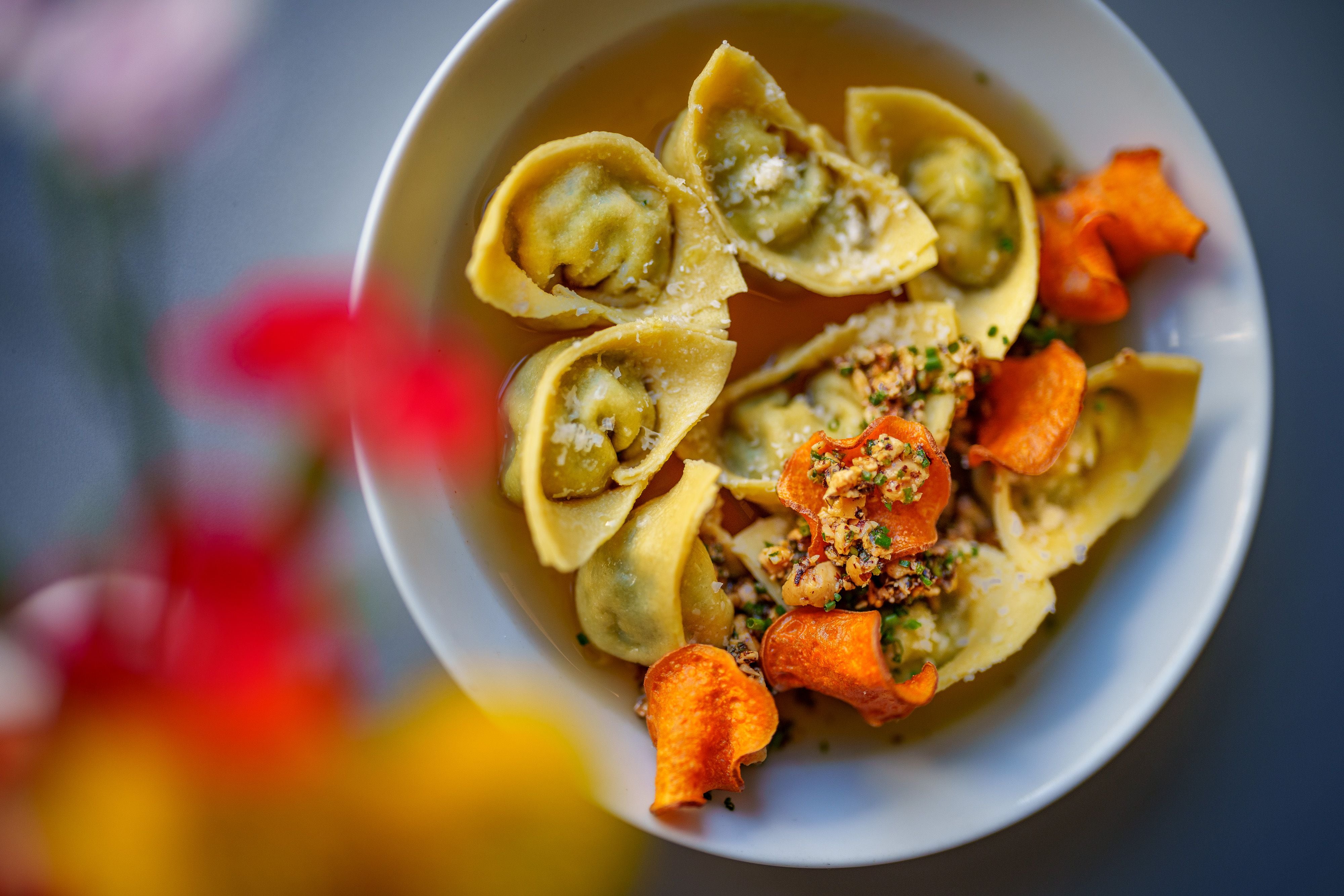
If you visit Arlo and see beef on the menu, you know you’ve happened upon something special. Milo Carrier, the executive chef and owner of Arlo — which opened in 2020 at 271 N. Center St. in Salt Lake City — said his restaurant orders only about two cows every year.
Carrier will purchase half a cow at a time, which is between 300 and 500 pounds of beef, and the team will work through that for about two or three weeks, starting with the steaks. Then, as less of the animal remains, the team will switch to cooking hamburgers or sausage or braising the beef. “It kind of forces us to think a little bit more creatively about what we’re going to serve,” he said.
It’s more common for Arlo to serve pork, but no matter what type of meat the restaurant is serving, all of the animals come from farms within 100 miles of Salt Lake City, Carrier said, including Christiansen’s Family Farm in Fairfield.
Carrier also supports several vegetable farms, including Top Crops, Keep It Real Vegetables and B.U.G. Farms — he even employs some farmers in his restaurant during the off-season. He said Arlo is constantly in a “process of refinement and growth and progression” when it comes to sourcing its ingredients. At this point, the restaurant isn’t 100% locally sourced, however, “we are continually moving closer, or in that direction,” he said.
Utah is full of local growers and producers, Carrier said, it just might take a “little bit of research” to find them. But when you support them through their online store or at stand at the farmers market, “it’s not that much more work or effort to ... make that choice. And I think that goes a long way.”
Carrier sums up the concept of sustainability as “the ability to continue.” And he applies that idea not just to his restaurant’s ingredients but to his staffing as well, by offering his employees plenty of time away from the restaurant to recharge.
Sustainability is “integral” to how Arlo operates, he said.
Hell’s Backbone Grill
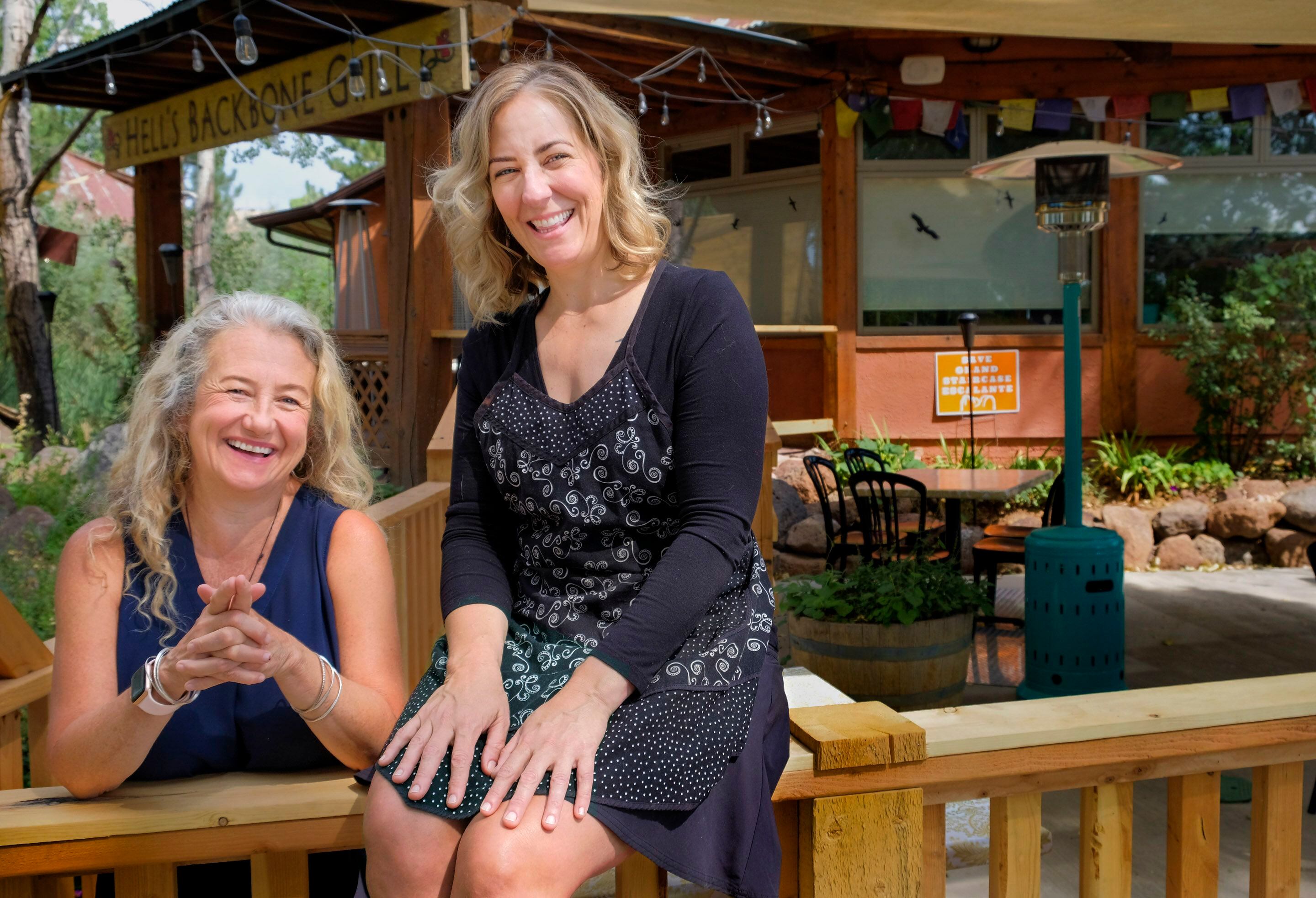
For Blake Spalding and Jen Castle, two friends who are founding chef-owners at Hell’s Backbone Grill in Boulder inside Grand Staircase-Escalante National Monument, sustainability is a “filter” through which they put all their decisions, no matter how big or small, Spalding said.
Everything from where they get their eggs to how they structure time-off requests for their staff, Spalding said, and from the way they house their seasonal workers to how they prune their fruit trees, all of their practices come from a “deeper, true sense of what it means to be sustainable.”
Spalding said she and Castle will often ask themselves, “Is it good for the planet?” “Is it good for the community of Boulder?” “Is it good for our employees?”
The food served in the restaurant — which is in its 24th year and 25th season — is, as much as possible, either grown on Spalding and Castle’s farm or sourced from a local farmer or rancher. Historically, the Hell’s Backbone team has grown literal tons of produce on the farm, Spalding said, then either served it fresh in the restaurant or preserved the harvest through freezing, canning, dehydrating, pickling or other means.
“My understanding is that we were the first true farm-to-table restaurant in the entire Rocky Mountain Southwest, in terms of actually having a farm and producing our own food,” Spalding said. “Because I don’t consider ‘farm-to-table’ restaurants to be restaurants that ... just buy stuff from farmers. Everybody should be buying from farmers.”
Instead of “serving food out of context,” or serving food that comes from far away, Spalding said, you should have a story and “a general reference for whatever it is that you’re offering, whether it be meat or bread or fruit. Knowing to the best of your ability, because nothing is perfect, but knowing the provenance of that thing that you’re offering to guests.”
For Spalding and Castle, all these practices are tied directly to their fight for their community and the earth as a whole.
“My thing is to make the world a better place with our restaurant,” Spalding said. “By trying to be a standard-bearer of a kind of different mindset that says, ‘Hey, we could be doing better.’”


















